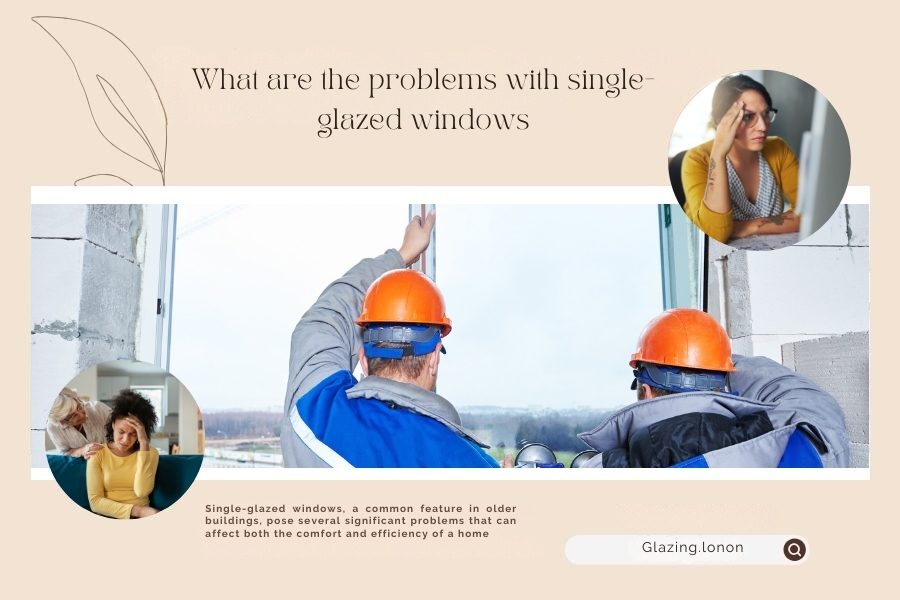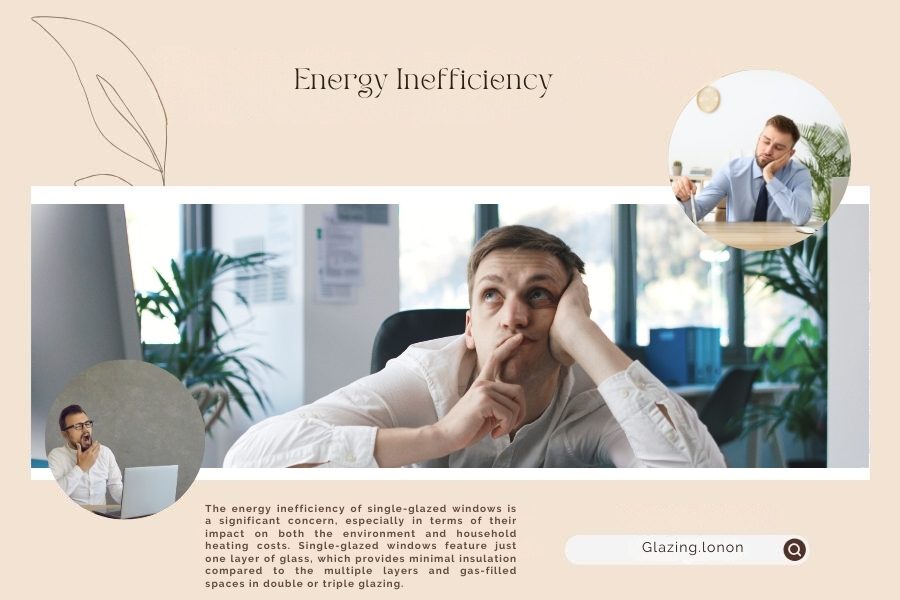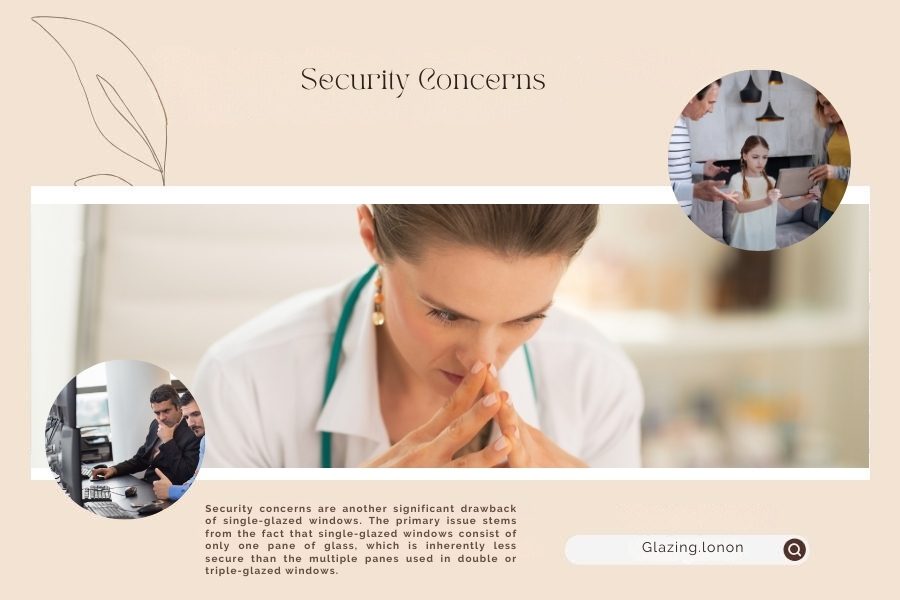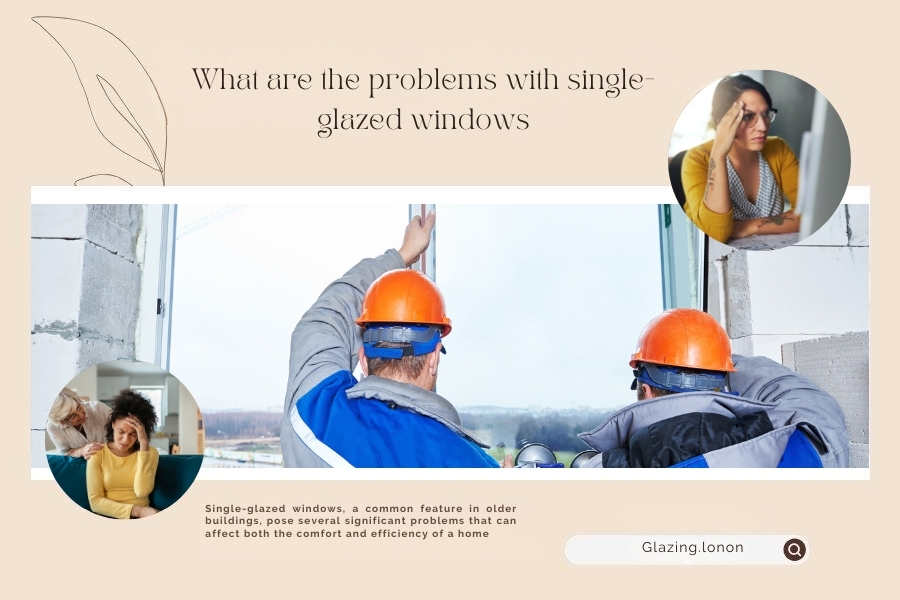
Single glazed windows , a common feature in older buildings , pose several significant problems that can affect both the comfort and efficiency of a home . These issues primarily stem from the fact that single glazing consists of only one pane of glass , lacking the additional layers and insulating air or gas spaces found in double or triple glazing . Firstly , single-glazed windows are notoriously poor in terms of energy efficiency ; they allow substantial heat loss, leading to higher energy bills and a less comfortable living environment .
Single glazed , This inefficiency is quantified by a high U-value , indicating poor thermal insulation . Secondly, these windows do little to reduce external noise , making them unsuitable for homes in noisy areas . The thin barrier does little to dampen sounds from outside, potentially affecting the quality of life inside the home . Thirdly , single glazing is prone to condensation issues , which can lead to problems like dampness and mold , harmful to both the building’s structure and the residents’ health .
Energy Inefficiency | Single glazed

Single glazed , The energy inefficiency of single-glazed windows is a significant concern , especially in terms of their impact on both the environment and household heating costs . Single-glazed windows feature just one layer of glass , which provides minimal insulation compared to the multiple layers and gas-filled spaces in double or triple glazing . This lack of insulation means that a lot of heat can escape from a building through single-glazed windows , leading to increased energy consumption to maintain comfortable indoor temperatures .
The inefficiency of single glazing is measured by its U-value , a metric that quantifies how well a building material conducts heat. The higher the U-value , the worse the material is at insulating . Single-glazed windows typically have a high U-value , around 5.6 , which is considerably higher than that of double or triple-glazed windows (which have U-values of about 2.8 and 0.8, respectively) . This high U-value indicates that single-glazed windows are poor at preventing heat transfer , leading to greater heat loss from a building .
This inefficiency not only leads to increased energy consumption and higher heating bills but also contributes to a larger carbon footprint , as the additional energy required for heating is often generated from fossil fuels . Consequently , upgrading from single to double or triple glazing can be an effective way to improve a building’s energy efficiency , reduce heating costs , and minimize environmental impact .
Single glazed | Noise Pollution

Noise pollution is a notable issue with single-glazed windows , particularly relevant in urban or noisy areas . Single glazing , due to its solitary pane of glass, offers minimal sound insulation . This inadequacy allows external noise – from traffic , pedestrians , or other urban activities – to easily penetrate into the home , potentially disrupting the peaceful and quiet environment that many seek in their living spaces . The thin barrier of a single pane does little to absorb or dampen these sound vibrations .
The difference becomes especially apparent when compared to the superior noise reduction capabilities of double or triple-glazed windows . These windows , with their multiple layers of glass and intervening air or gas spaces , create a more effective barrier against external noise . The additional layers not only provide thermal insulation but also significantly improve sound insulation , thus contributing to a quieter and more serene indoor environment. Upgrading from single to double or triple glazing can thus be a crucial step in enhancing the acoustic comfort of a home , especially in areas where external noise is a constant presence .
Condensation and Related Problems

Single glazed , Condensation and its related problems are significant issues associated with single-glazed windows . These issues arise due to the single pane’s inability to insulate effectively against temperature differences between the inside and outside of a building . In single-glazed windows , the inner surface of the glass can cool down significantly , especially in colder weather . When the warm , moist air inside the house comes into contact with the cold surface of the window , it cools down rapidly , and the moisture in the air condenses into water droplets on the glass .
This phenomenon is particularly pronounced in single-glazed windows due to their higher thermal conductivity and lower surface temperature . This condensation can lead to several problems . Firstly , it can contribute to damp conditions , which in turn can encourage the growth of mold and mildew . These not only damage the window frames and surrounding areas but can also pose health risks , especially to those with respiratory issues . Secondly , the presence of moisture can lead to the deterioration of the window frames , especially if they are made of wood , leading to rot and structural damage over time .
The issue of condensation is much less significant in double or triple-glazed windows due to their better insulation properties . The gap between the panes in double or triple glazing , often filled with inert gases like argon, acts as a barrier to heat transfer , maintaining a more consistent temperature on the inner glass pane and significantly reducing the likelihood of condensation forming .
Security Concerns | Single glazed

Single glazed , Security concerns are another significant drawback of single-glazed windows . The primary issue stems from the fact that single-glazed windows consist of only one pane of glass , which is inherently less secure than the multiple panes used in double or triple-glazed windows . This single layer of glass is easier to break or damage, which can make homes more vulnerable to break-ins and burglaries.
Moreover , older single-glazed windows often feature outdated locking mechanisms or frames , which may not provide the same level of security as modern window designs . These older systems can be easier for intruders to overcome , further increasing the security risk . In contrast , double and triple-glazed windows not only have multiple layers of glass , making them tougher and more resilient to forced entry , but they also often come with improved locking mechanisms and stronger frames . These features significantly enhance the security of a property .
The additional panes in double and triple glazing act as an extra barrier against forced entry , and the modern locking systems provide an added level of protection . For homeowners concerned about security, upgrading from single to double or triple glazing can be an effective way to enhance the safety and security of their property . This upgrade, along with additional security measures like enhanced locks or security alarms , can provide greater peace of mind .
Conclusion
In conclusion of single glazed , single-glazed windows present a range of challenges, including poor energy efficiency , increased noise pollution , condensation and related dampness issues , and security vulnerabilities . These limitations highlight the benefits of upgrading to double or triple-glazed windows , which offer superior insulation , reduced noise transmission , minimized condensation problems , and enhanced security features . For homeowners , particularly those in older properties, considering such an upgrade is a worthwhile investment , promising not only increased comfort and security but also potential savings in energy costs and a positive impact on the environment .

